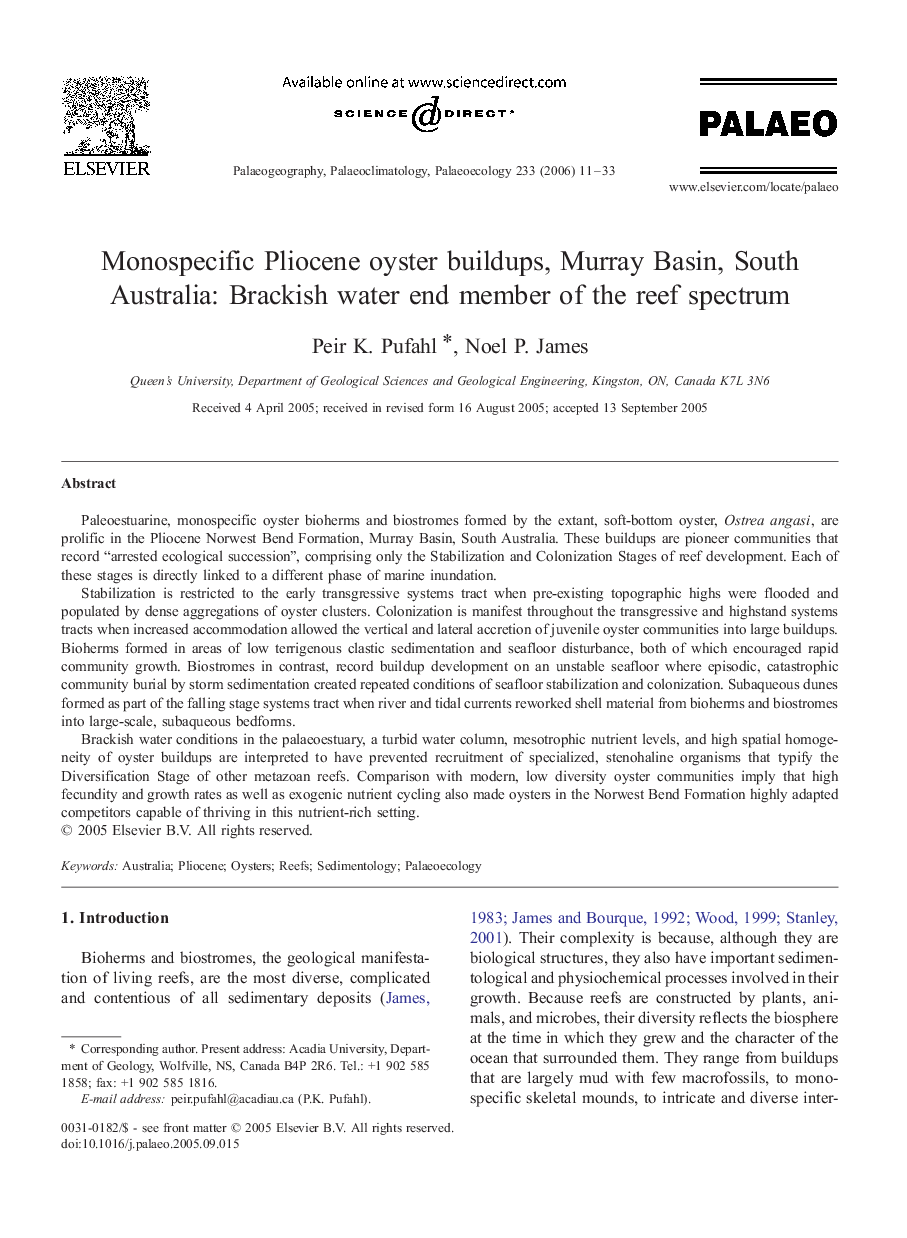| کد مقاله | کد نشریه | سال انتشار | مقاله انگلیسی | نسخه تمام متن |
|---|---|---|---|---|
| 4469483 | 1622376 | 2006 | 23 صفحه PDF | دانلود رایگان |

Paleoestuarine, monospecific oyster bioherms and biostromes formed by the extant, soft-bottom oyster, Ostrea angasi, are prolific in the Pliocene Norwest Bend Formation, Murray Basin, South Australia. These buildups are pioneer communities that record “arrested ecological succession”, comprising only the Stabilization and Colonization Stages of reef development. Each of these stages is directly linked to a different phase of marine inundation.Stabilization is restricted to the early transgressive systems tract when pre-existing topographic highs were flooded and populated by dense aggregations of oyster clusters. Colonization is manifest throughout the transgressive and highstand systems tracts when increased accommodation allowed the vertical and lateral accretion of juvenile oyster communities into large buildups. Bioherms formed in areas of low terrigenous clastic sedimentation and seafloor disturbance, both of which encouraged rapid community growth. Biostromes in contrast, record buildup development on an unstable seafloor where episodic, catastrophic community burial by storm sedimentation created repeated conditions of seafloor stabilization and colonization. Subaqueous dunes formed as part of the falling stage systems tract when river and tidal currents reworked shell material from bioherms and biostromes into large-scale, subaqueous bedforms.Brackish water conditions in the palaeoestuary, a turbid water column, mesotrophic nutrient levels, and high spatial homogeneity of oyster buildups are interpreted to have prevented recruitment of specialized, stenohaline organisms that typify the Diversification Stage of other metazoan reefs. Comparison with modern, low diversity oyster communities imply that high fecundity and growth rates as well as exogenic nutrient cycling also made oysters in the Norwest Bend Formation highly adapted competitors capable of thriving in this nutrient-rich setting.
Journal: Palaeogeography, Palaeoclimatology, Palaeoecology - Volume 233, Issues 1–2, 4 April 2006, Pages 11–33